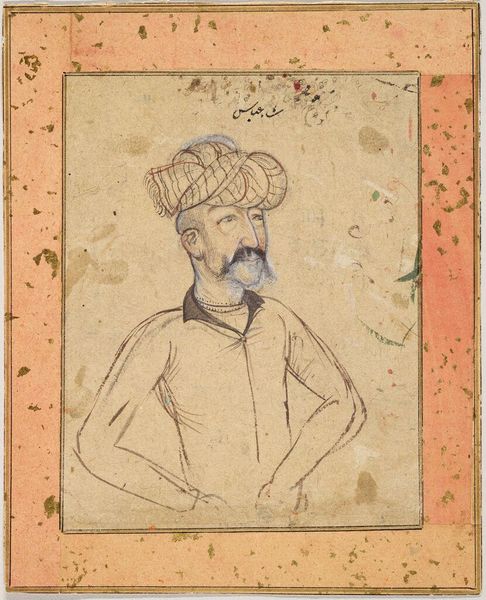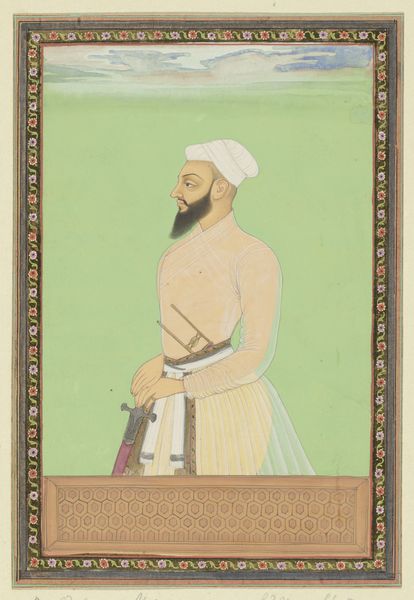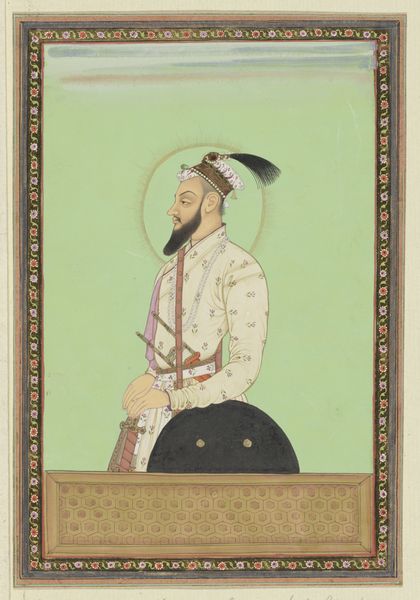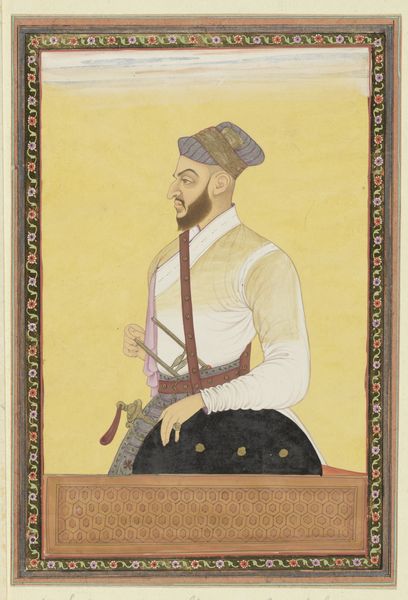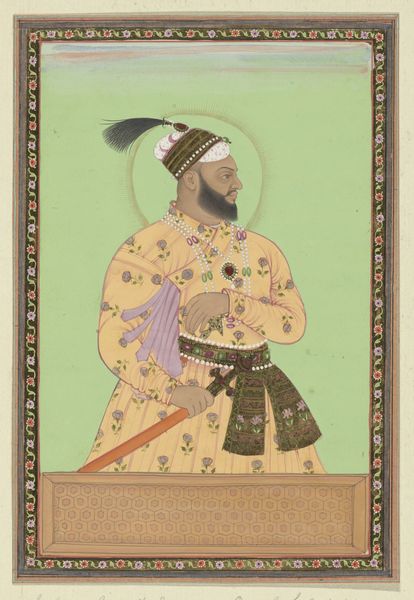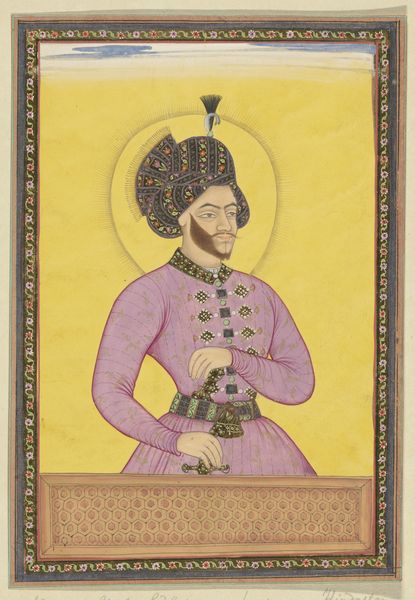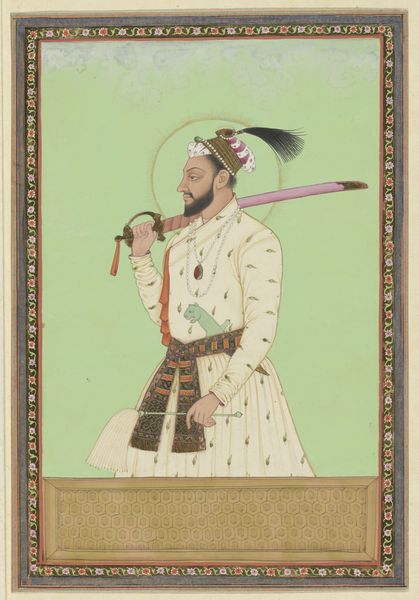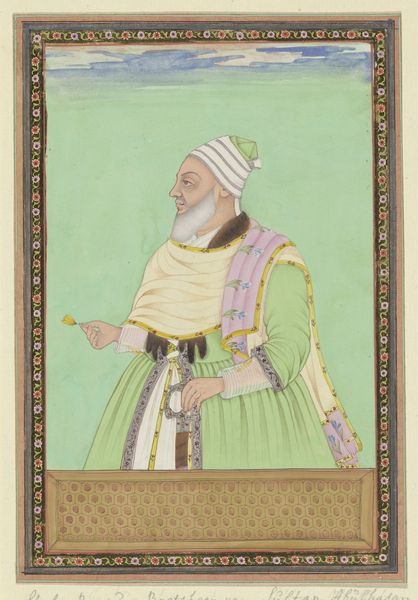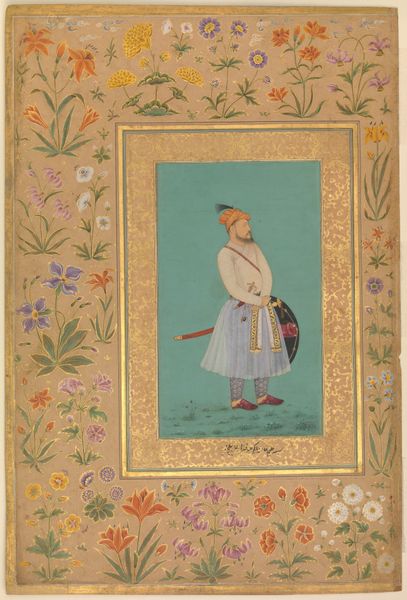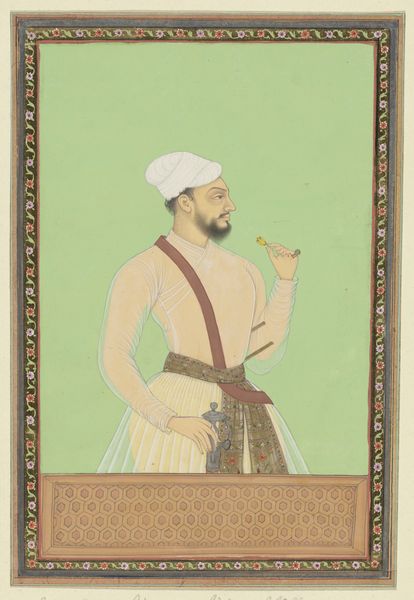
Dimensions: height 28 mm, width 21 mm
Copyright: Rijks Museum: Open Domain
Editor: So this is *Munsja sultan mhamod derde koning van Indostan*, a watercolor portrait dating roughly from 1675 to 1755, attributed to Adrianus Canter Visscher. The scale seems incredibly small. What strikes you most about this piece? Curator: For me, it's the tension between the portrait's overt representation of power and the fragility of its material presence. Considering the historical context, this piece likely reflects early European encounters with Indian royalty. Do you notice how the artist uses a Western portrait style yet also incorporates Mughal elements in the clothing and turban? Editor: Yes, I see that now. It’s like a fusion of styles, isn't it? Almost as if they're trying to reconcile different worlds. Curator: Exactly! This points towards a complex negotiation of power and representation. What does it mean for a European artist to depict an Indian Sultan? Whose gaze is being centered, and what cultural assumptions are being made? Editor: So you’re saying this image might reveal as much about the European worldview as it does about the Sultan himself? Curator: Precisely! Consider how the miniature format itself might have been used – perhaps as a diplomatic gift, or as a tool for asserting cultural dominance. We have to ask who commissioned this and what purpose did it serve in cross-cultural exchange and potential colonial projects. Editor: I never thought about it that way. I was just looking at the aesthetic qualities of the piece. Now I’m seeing a whole story about cultural exchange and power dynamics. Curator: It's a reminder that art is never neutral, and that even seemingly simple portraits can be rich with social and political meaning. Editor: This really makes me think differently about how to approach art from a historical and social perspective. Thanks so much for opening my eyes!
Comments
No comments
Be the first to comment and join the conversation on the ultimate creative platform.

